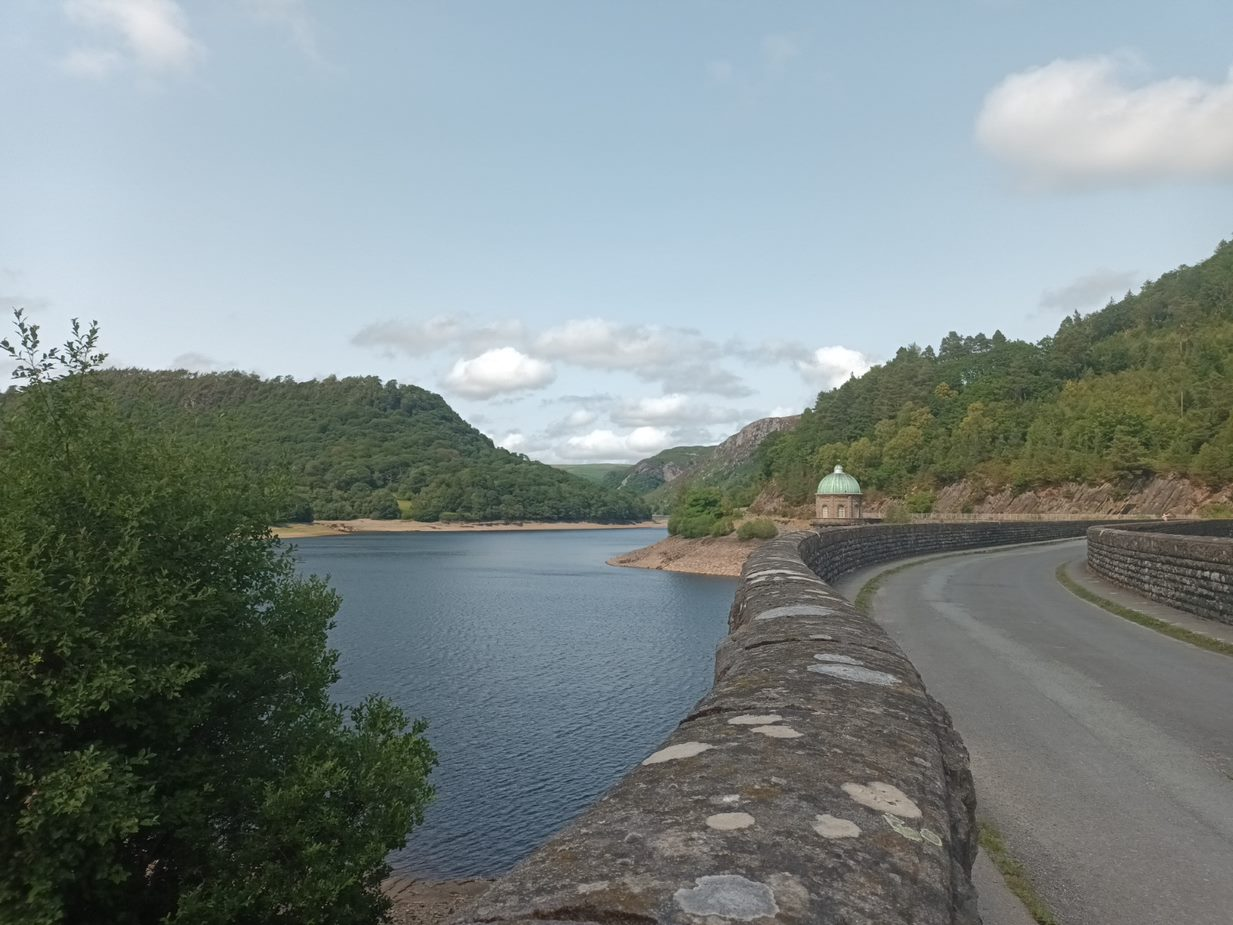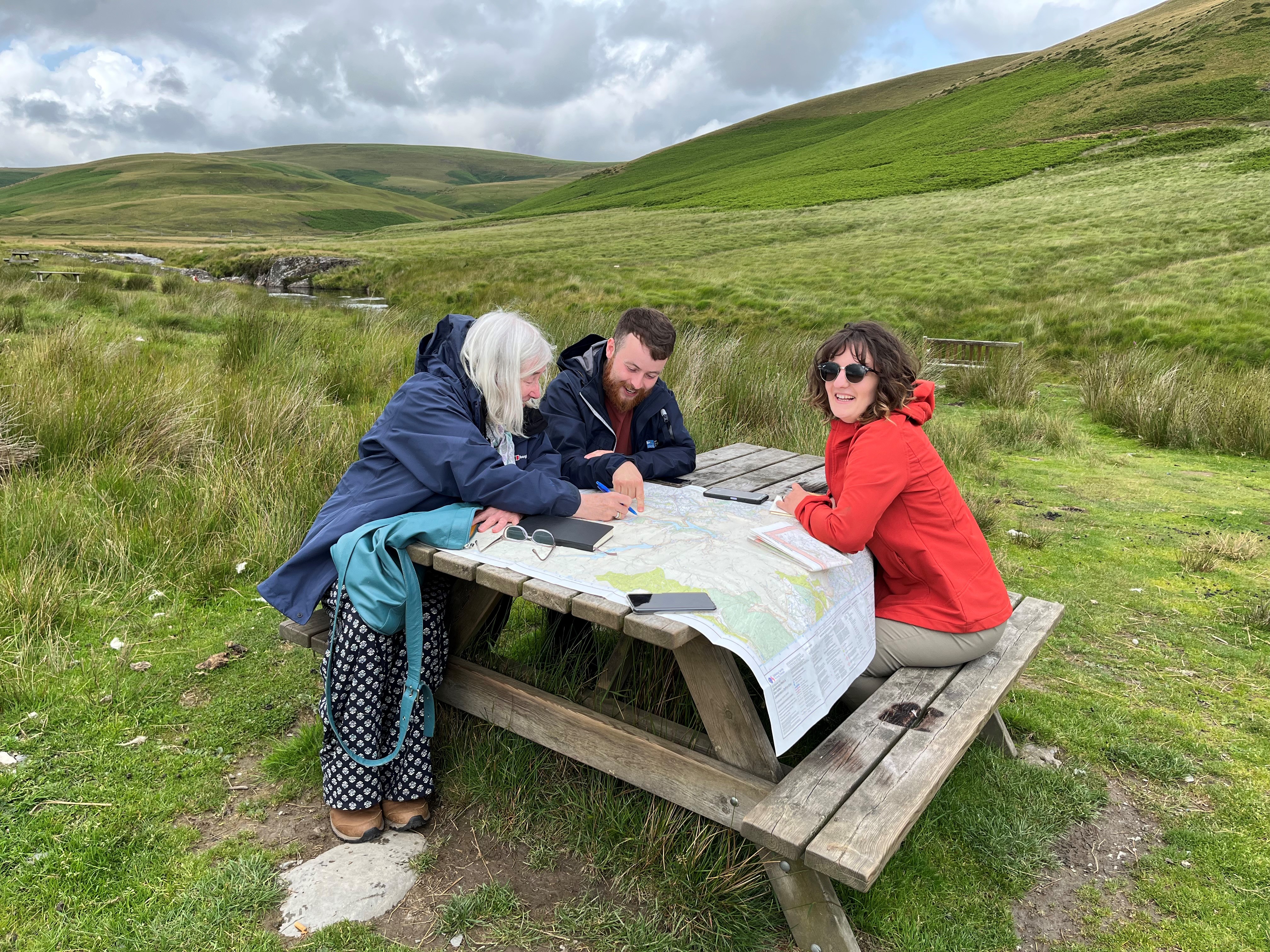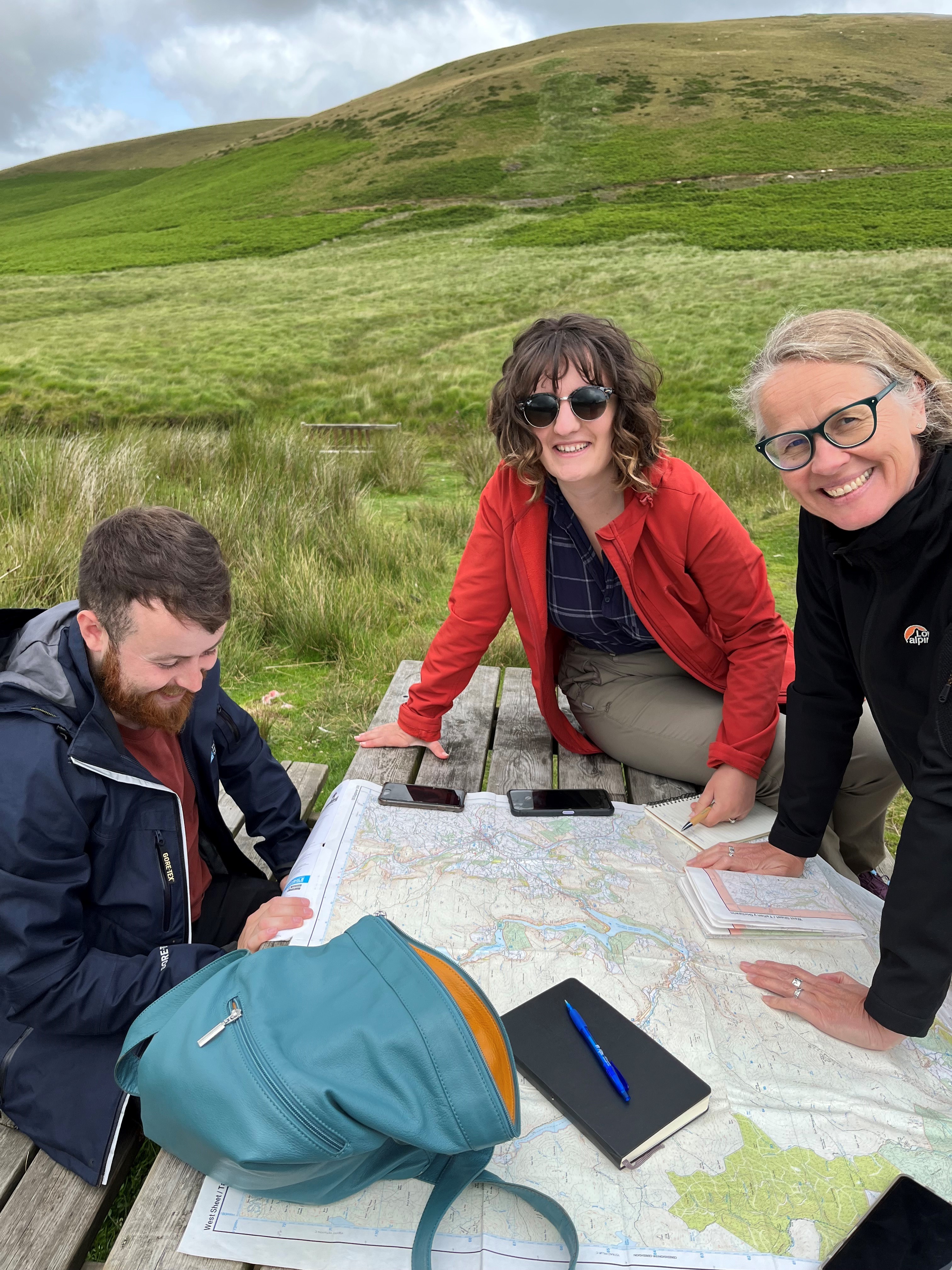STAND Team Visit Elan Valley, Wales
STAND team visited the Elan Valley, Wales, on the 13th of July
Alix, Susan and Sheena from the STAND team visited the Elan Valley, Wales, on the 13th of July to gain a deeper understanding of the history, character and current activities taking place within the Valley, one of our case study landscapes. Our team met up with the local RSPB Conservation Officer and the Reserve Warden at RSPB Carganfallt for a tour of the landscape and a discussion on the current management, habitat types, challenges and opportunities for future land use change. The main habitats of the valley include blanket bogs, moorland, waterways and the woodland. At this location the woodland is referred to as an ‘Atlantic woodland’ because of the wetness of the environment it almost imitates the Amazon Rainforest. This habitat is incredibly rare globally and contains perfect conditions for rare plants, fungi and lichens. It’s also home to a variety of birds and mammals. The area is designated an Important Plant Area with plant species such as bog rosemary, cotton grasses, heather and bog mosses. The area is also designated Sight of Special Scientific Interest to support upland bird assemblage, peregrine falcon, merlin and red kites, with the wider landscape also providing key habitat for curlew’s, dunlin and golden plover.
Elan Valley has a deep history that dates back to around 4,000 years ago. The people and landscape of Elan Valley have been heavily shaped by the large dams and reservoirs built between the late 19th to mid-20th century. The wider Elenydd is deeply rooted in traditional upland sheep farming and remains one of mid-Wales most inaccessible and wild landscapes.
The team will be returning in September for workshops with local stakeholders where we will discuss with local communities their values and future land use preferences. When creating future land use scenarios, it’s important to get local input and knowledge from the people who work and live within the landscape.
View from Claerwen Dam:: areas of Ffridd habitat with mixed bracken, small shrubs and scrub, may provide opportunites for treescape expansion.

Open bog and moorland above the reservoirs, key areas for Curlew and other upland birds.

Craig Goch Dam: decidous woodland lines the resevoir edges, with some small areas of commeical coniferous plantation scattered on higher slopes.

The Team at Elan Valley: Alix and Susan with RSPB Conservation Officer, Ben.

The Team at Elan Valley: Alix and Sheena with RSPB Conservation Officer, Ben.

Teyana Muir
